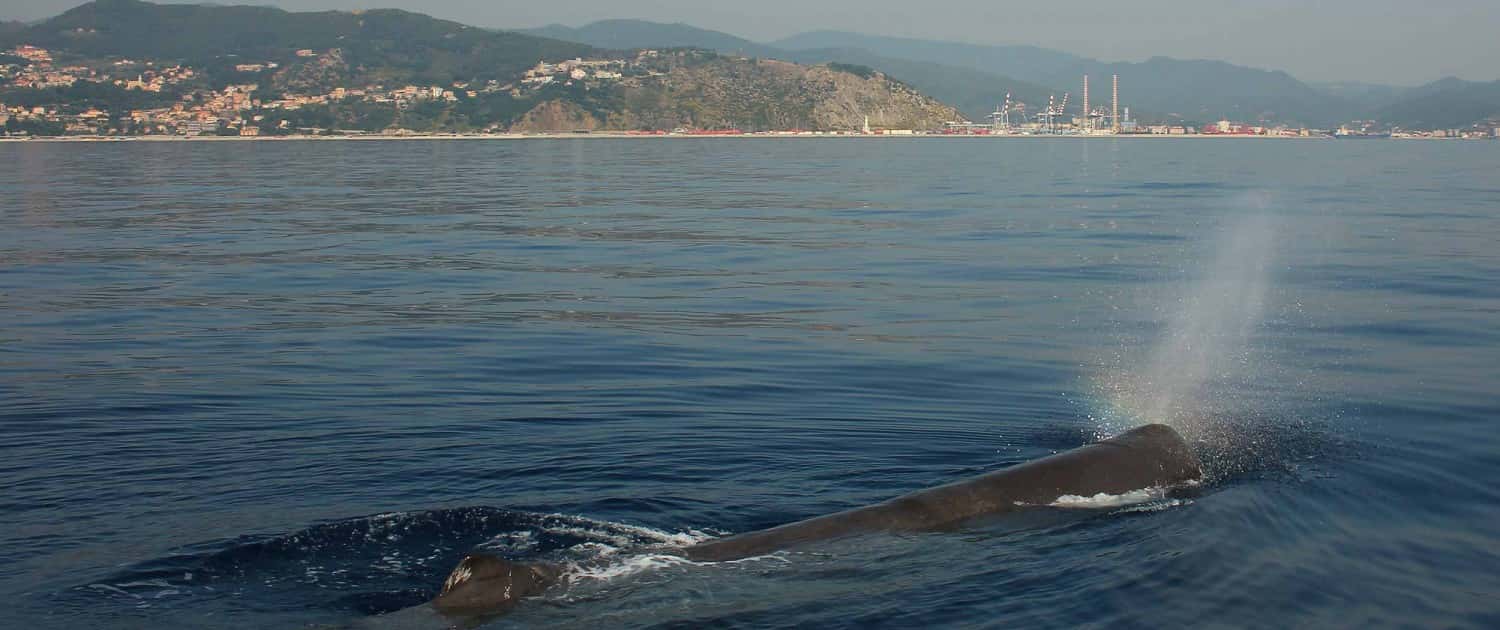Sperm whales are the largest predators on Earth and represented in the Mediterranean by a distinct population (Notarbartolo 2014), classified as Endangered in the IUCN Red List. The principal results of Tethys’ activities on sperm whales included:
- a global study of sperm whales as indicators of the health of the seas, through participation in 2004 to the Mediterranean leg of the “Voyage of the Odyssey”, a five-year program designed to gather the first baseline data on levels of synthetic contaminants throughout the world’s oceans. The Mediterranean leg crossed the entire region from Turkey to Gibraltar, and several biopsy samples were collected in locations such as Crete, the Pelagos Sanctuary and the Balearic Islands;
- a study of the occurrence and movements of sperm whales amongst different Mediterranean areas, based on long-term photo-identification efforts (1990-2015) and data sharing with other 12 institutions. Results indicate long-range movements of individual whales throughout the entire western basin, with straight-line distances between sightings of the same individual up to 1600 km (Carpinelli et al. 2014);
- such indication was further corroborated by the finding that in a group of seven sperm whales that stranded in Southern Italy in 2009, two had been seen in years before in the western Mediterranean, and a third in the eastern basin (Frantzis et al. 2011);
- a study of the presence and trends in abundance of sperm whales, as well as of Risso’s dolphins and Cuvier’s beaked whales, in selected portions (inner and upper continental slope) of the Pelagos Sanctuary, between 1996 and 2000. The research, based on measures of relative abundance, indicated a recent increase of sperm whales in the study area, likely due to behavioural changes leading to the use of the area for a longer time than in the past;
- a study of body lenght and individual growth rates started in 2005, based on acoustic and photogrammetric tools applied for the first time in the Mediterranean, using a tested relationships between recorded Inter Pulse Interval (IPI) and total length (Pierantonio and Airoldi 2012, 2014; Pierantonio et al. 2016).
Literature
Notarbartolo di Sciara G. 2014. Sperm whales, Physeter macrocephalus, in the Mediterranean Sea: a summary of status, threats, and conservation recommendations. Aquatic Conservation: Marine and Freshwater Ecosystems 24 (Suppl. 1):4-10. DOI: 10.1002/aqc.2457
Carpinelli, E., Gauffier, P., Verborgh, P., Airoldi, S., David, L., Di-Méglio, N., Cañadas, A., Frantzis, A., Rendell, L., Lewis, T., Mussi, B., Pace, D.S., De Stephanis, R., 2014. Assessing sperm whale (Physeter macrocephalus) movements within the western Mediterranean Sea through photo-identification. Aquatic Conservation: Marine and Freshwater Ecosystems 24:23–30. doi:10.1002/aqc.2446
Frantzis A., Airoldi S., Notarbartolo di Sciara G., Johnson C., Mazzariol S. 2011. Inter-basin movements of Mediterranean sperm whales provide insight into their population structure and conservation. Deep Sea Research Part I 58:454-459. doi:10.1016/j.dsr.2011.02.005
Pierantonio N., Airoldi S. 2012. Use of photogrammetry to estimate sperm whales body length in the Ligurian Sea, NW Mediterranean. 26th Annual Conference of the European Cetacean Society, Galway, Ireland, 26–28 March 2012.
Pierantonio N., Airoldi S. 2014. Length and growth of male sperm whales (Physeter macrocephalus) in the NW Mediterranean Sea. ‘Scientific progress on cetaceans and perspectives in the Pelagos Sanctuary’ Workshop, 28th Annual Conference of the European Cetacean Society, Liege, Belgium, 5 April 2014.
Pierantonio N., Soldano G., Airoldi S. 2016. A new equation to calculate the allometric Inter-Pulse Interval to body-length relationship in Mediterranean male sperm whales. 30th Annual Conference of the European Cetacean Society, Madeira, Portugal, 14-16 March 2016


